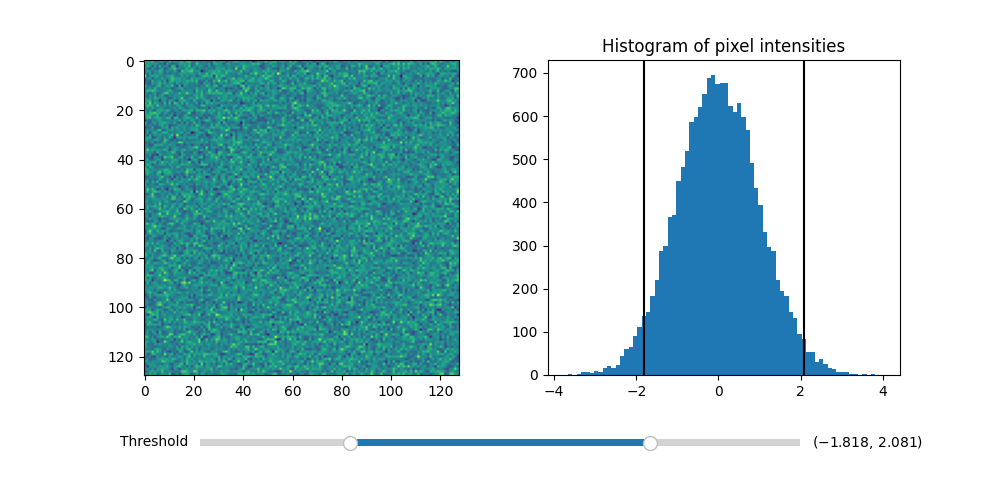ノート
完全なサンプルコードをダウンロードするには、ここをクリックしてください
RangeSlider を使用した画像のしきい値処理#
RangeSlider ウィジェットを使用して、画像のしきい値を制御します。
RangeSlider ウィジェットは、widgets.Slider
ウィジェットと同様に使用できます。主な違いは、RangeSlider のval属性が単一の float ではなく float のタプルであることです。(lower val, upper val)
を使用して単一の float を制御する例については、Sliderを参照してください。Slider
離散値へのスナップの例については、スライダを離散値にスナップするを参照してくださいSlider。
import numpy as np
import matplotlib.pyplot as plt
from matplotlib.widgets import RangeSlider
# generate a fake image
np.random.seed(19680801)
N = 128
img = np.random.randn(N, N)
fig, axs = plt.subplots(1, 2, figsize=(10, 5))
fig.subplots_adjust(bottom=0.25)
im = axs[0].imshow(img)
axs[1].hist(img.flatten(), bins='auto')
axs[1].set_title('Histogram of pixel intensities')
# Create the RangeSlider
slider_ax = fig.add_axes([0.20, 0.1, 0.60, 0.03])
slider = RangeSlider(slider_ax, "Threshold", img.min(), img.max())
# Create the Vertical lines on the histogram
lower_limit_line = axs[1].axvline(slider.val[0], color='k')
upper_limit_line = axs[1].axvline(slider.val[1], color='k')
def update(val):
# The val passed to a callback by the RangeSlider will
# be a tuple of (min, max)
# Update the image's colormap
im.norm.vmin = val[0]
im.norm.vmax = val[1]
# Update the position of the vertical lines
lower_limit_line.set_xdata([val[0], val[0]])
upper_limit_line.set_xdata([val[1], val[1]])
# Redraw the figure to ensure it updates
fig.canvas.draw_idle()
slider.on_changed(update)
plt.show()
